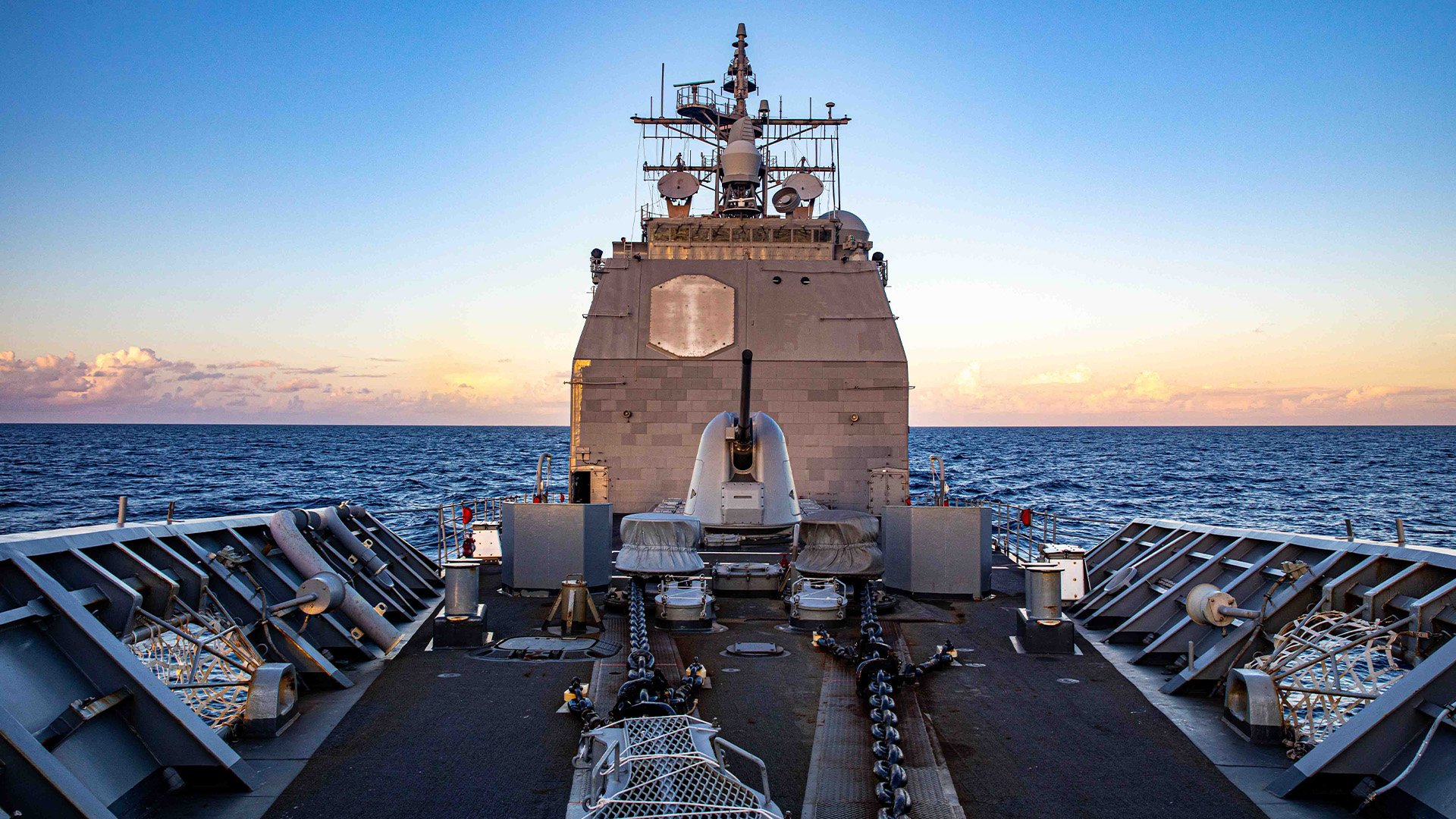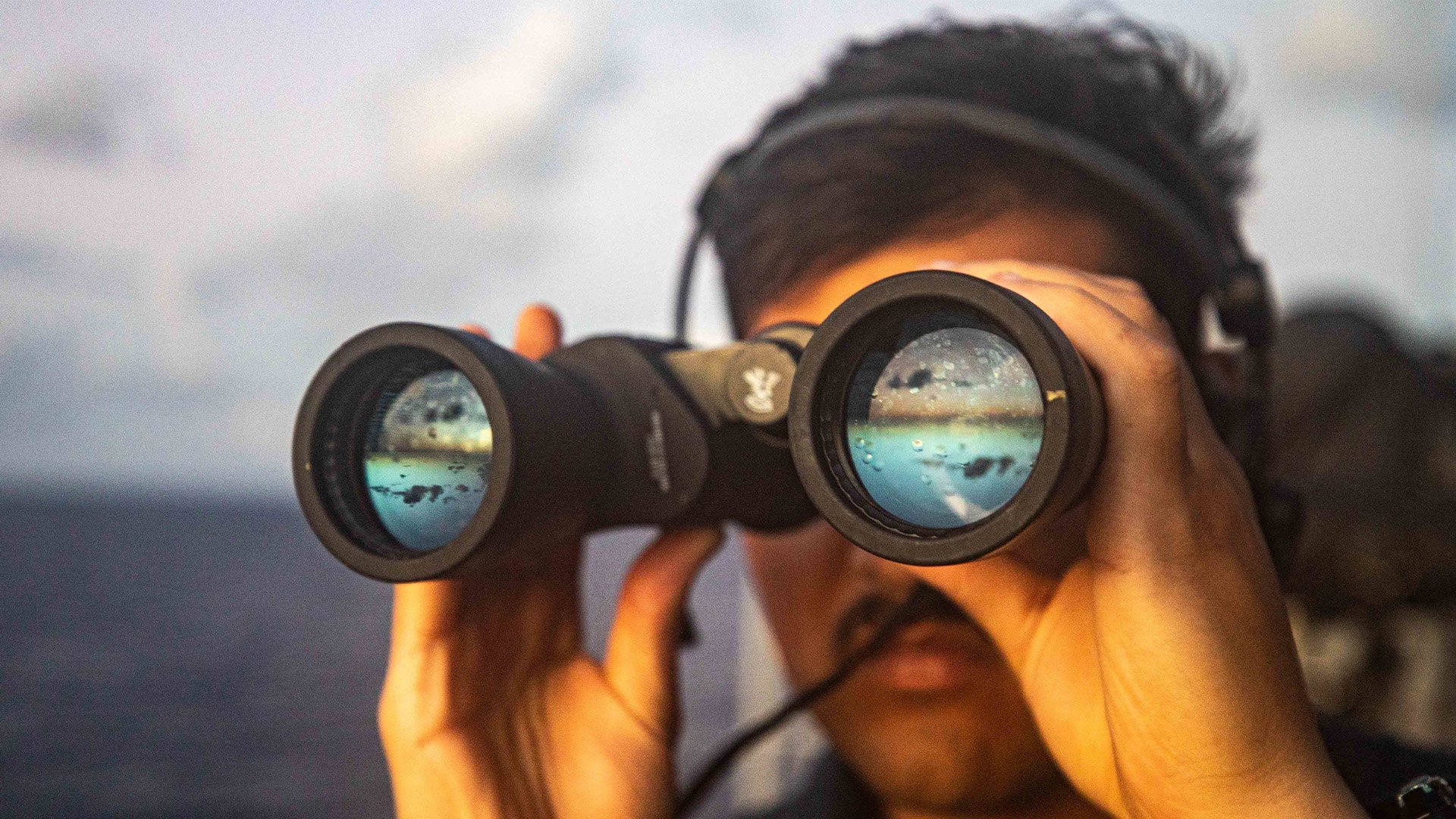
The Ticonderoga-class guided-missile cruiser Chancellorsville (CG 62) sails the South China Sea on Nov. 29, 2022. Chancellorsville irked China by performing a freedom on navigation operation near contested cays in the Spratly Islands. US Navy photo by Mass Communication Specialist 2nd Class Justin Stack.
US 7th Fleet leaders are calling “false” Beijing’s latest gripe about a freedom of navigation operation near the contested Spratly Islands in the South China Sea.
On Tuesday, Nov. 29, the guided-missile cruiser Chancellorsville sailed near 18 islets and cays occupied by China, although Vietnam, the Philippines, Taiwan, Malaysia, and Brunei also claim them.
According to China’s military, the warship came closest to the Gaven Reefs along the Tizard Bank, a fortified sprawl of rocks bristling with search radars, anti-aircraft and naval guns, and anti-ballistic rotary cannons.
"Without the approval of the Chinese government, the guided-missile cruiser USS Chancellorsville illegally entered the waters near the islands and reefs of China's Nansha Islands on Tuesday," Senior Col. Tian Junli, spokesman for the People’s Liberation Army Southern Theater Command, said in a prepared statement released to state-controlled media.
"The theater command has organized naval and air forces to track, monitor and warn it off," he added.

Seaman Robert Torres, from Orlando, Florida, scans for surface contacts on the bridge wing of the Ticonderoga-class guided-missile cruiser Chancellorsville off the Spratly Islands in the South China Sea, Tuesday, Nov. 29, 2022. US Navy photo by Mass Communication Specialist 2nd Class Justin Stack.
The US 7th Fleet retorted that the Chancellorsville’s FONOP was conducted “in accordance with international law and then continued on to conduct normal operations in waters where high seas freedoms apply.”
“The operation reflects our continued commitment to uphold freedom of navigation and lawful uses of the sea as a principle. The United States is defending every nation's right to fly, sail, and operate wherever international law allows, as USS Chancellorsville did here. Nothing the PRC says otherwise will deter us,” the US Navy stated.
Tian disagreed, saying the FONOP was “hard proof” that the US wants to monopolize and militarize the South China Sea and remains the chief security risk in the region.
US officials warned China the FONOPS are going to continue, whether Beijing likes it or not.
“These operations demonstrate that the United States will fly, sail, and operate wherever international law allows—regardless of the location of excessive maritime claims and regardless of current events,” the 7th Fleet statement said.
Read Next: Flattop Flagship Gerald R. Ford Returns Home From Maiden Cruise

Carl Prine is a former senior editor at Coffee or Die Magazine. He has worked at Navy Times, The San Diego Union-Tribune, and Pittsburgh Tribune-Review. He served in the Marine Corps and the Pennsylvania Army National Guard. His awards include the Joseph Galloway Award for Distinguished Reporting on the military, a first prize from Investigative Reporters & Editors, and the Combat Infantryman Badge.
BRCC and Bad Moon Print Press team up for an exclusive, limited-edition T-shirt design!
BRCC partners with Team Room Design for an exclusive T-shirt release!
Thirty Seconds Out has partnered with BRCC for an exclusive shirt design invoking the God of Winter.
Lucas O'Hara of Grizzly Forge has teamed up with BRCC for a badass, exclusive Shirt Club T-shirt design featuring his most popular knife and tiomahawk.
Coffee or Die sits down with one of the graphic designers behind Black Rifle Coffee's signature look and vibe.
Biden will award the Medal of Honor to a Vietnam War Army helicopter pilot who risked his life to save a reconnaissance team from almost certain death.
Ever wonder how much Jack Mandaville would f*ck sh*t up if he went back in time? The American Revolution didn't even see him coming.
A nearly 200-year-old West Point time capsule that at first appeared to yield little more than dust contains hidden treasure, the US Military Academy said.












